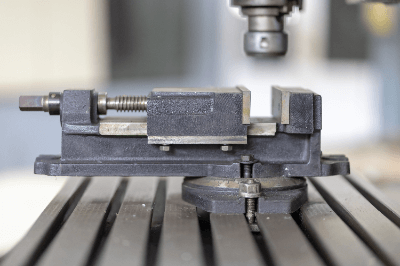What Is a Machine Vise?

A machine vise is a jig that is attached to a table or machine to hold the object in place so that it does not move when processing metal plates and other materials. They are mainly used for processing, such as milling, grinding, and drilling. By using a machine vice to precisely and strongly fix an object, the X, Y, and Z axes can be made accurate and the accuracy of machining can be improved.
However, a powerful load is applied during machining, so care must be taken to avoid lifting even when using a machine vise.
It is important to select a machine vise that is compatible with the machine to be processed, such as a milling machine or machining center.
Usage of Machine Vises
Machine vises are used to fix objects in machining centers and milling machines. In most cases, machine vises are clamped to a table, etc. Some models are fixed to an electromagnetic chuck for precision machining, while some models are equipped with a function to prevent lifting during machining.
There are machine vises made of cast iron to withstand powerful work, and other materials to suit the application. Machine Vises are also available in sizes ranging from small to large, depending on the object to be processed.
Principle of Machine Vises
Screws or shafts are used to clamp and secure the object to the table or equipment. There are two types of fixing methods: handle-type and wrench-type.
In the handle-type, once the object is clamped in the machine vise, simply turn the handle to secure it in place.
In the wrench-tightening type, the object is clamped in the machine vise, and the shaft is fixed in the groove hole on the side by turning the wrench and moving the movable mouthpiece.
Take care that the object is clamped in a slightly loose position and that the shaft is properly seated in the groove hole. As you tighten the rod bolt, the shaft acts as a fulcrum to pinch and secure the object. Tightening the rod bolt when the shaft is just caught in the groove hole may cause failure.
Normally, a machine vise is clamped to a table, but there are cases where a machine vise is fixed on a milling machine using an electromagnetic chuck.
The machining direction is usually one direction, but with models such as a sign vise with an inclination, a two-dimensional vise in which the vise itself rotates, and a three-dimensional vise, you can set the machining direction by yourself.